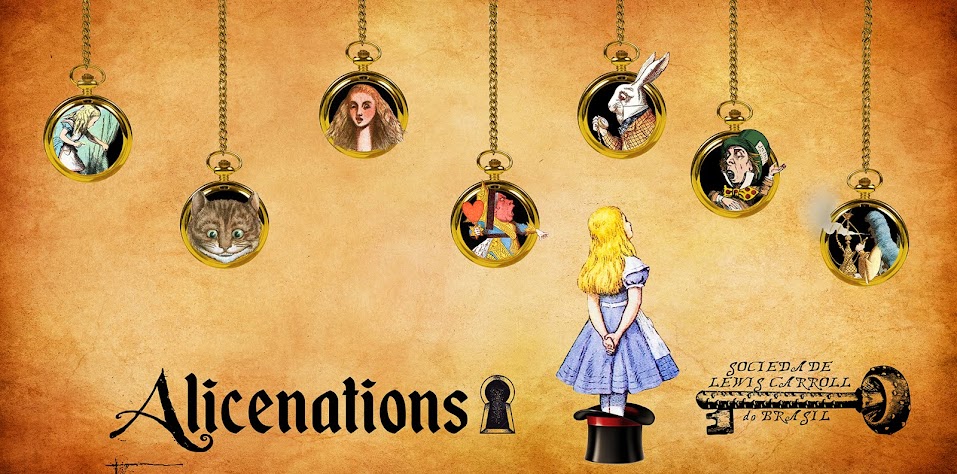"It is almost unanimous that the most successful Brazilian translation for the classical Carrollian poem is that of Augusto de Campos, the glorious looking-glassic “Jaguadarte”. It was published in different editions, beginning at a time of turning point of a deepening understanding of Carroll’s works for the adult Brazilian public. The two Alices were translated by Sebastião Uchôa Leite in a memorable publication in 1970’ , which incorporated Campos' translation of poems. Jaguadarte had already been published in 'Panaroma do Finnegans Wake' excerpts from the complex work of James Joyce transcriated by the brothers Campos, Augusto and Haroldo. In this endeavor the great knowledge of several languages, the critical expertise and the exercise of poetic creation allowed them a rich repertoire of producing outstanding language and new portmanteau, the onslaught in Carroll came together. Both translators were poets and Augusto had a special connection with the relationship between the text and its visuality, explored during years of experimentation in the Brazilian concretism literary movement, which he founded in the 1950s with his brother and also the writer Décio Pignatari.
One version announces that the Anglo-Saxon word "wocer" is for "fruit", while "Jabber" is for "excited discussion", that would give the meaning of "the fruit of excited discussions". Another possibility calls for the sense of “wacky” as crazy behavior. In Augusto de Campos' transcreation, the Jaguadarte, according to him, was a Jaguar (the animal) and arte (art) or a jaguar espadarte (swordfish) or água (water) with art, or whatever the reader wanted, in an incessant movement of senses proliferation. While in Carroll's original the word valise Brillig is composed by Bryl and Broil, corresponding to the time to cook dinner, that is, the end of the afternoon; the Briluz translation is composed of brilho (brightness) and luz (light), meaning the brightness of light at four o'clock in the afternoon, when the scene described in the verses takes place. While Slythy is composed of Slimy and Lithe “Smooth and active”; lesmolisas wraps lisas (smooth) as lesmas (slugs), Mimsy was more like "flimsy and miserable” while mimsicais are mimosas (mime) and musicais (musicals). And the imagination goes on. Traduttore creatore.
The first portmanteau of Carrollian nonsense were being born in Brazil. If the direct correspondence between the words is not faithful, the creative principle, the musicality, the rhythm, the fluidity, the alliterations, the visual suggestions, the spirit of invention remains, chortling in joy. Words crosses the mirror of languages and begins a new game in a parallel linguistic reality in one alicinatory logic. According to Augusto de Campos “With Jaguadarte, Carroll gave impetus to a new, non-dictionary, non-institutional way of approaching language, on the creative plane, providing us with sensitive instruments for our perception within the complexity of the relationships between the world and human mind ".
Recently Jaguadarte was published separately from Alice's full text with illustrations by Rita Vidal, with a verse over a picture occupying each page. According to the translator Augusto de Campos, the images escape the stereotypes of children's books, seeking to awaken the imagination rather than domesticate it in a predictable format. To give shape to the fantastic universe proposed in the book, the artist used numerous papers of different textures, colors and origins in a sharp cut. Reading aloud in pictures in conversations, senses and sounds, colors and textures, subtleties and suggestions, shakes and surprises, the reader's journey is also a challenge to the commonplace and the accommodated formulas that inhabit us. In addition to Campos' translation, the musical version of the poem, made by the avant-garde composer Arrigo Barnabé (1982) , also influenced the artist's synesthetic sensibility and creative process. “I can still hear it when I look at the illustrations. In addition to Tetê Espíndola's high-pitched voice, the music is all vertiginous, mysterious, sensations that I hope I have managed to convey to the illustrations.”Adriana Peliano



Nenhum comentário:
Postar um comentário